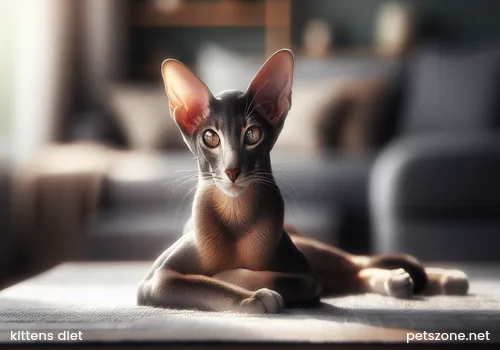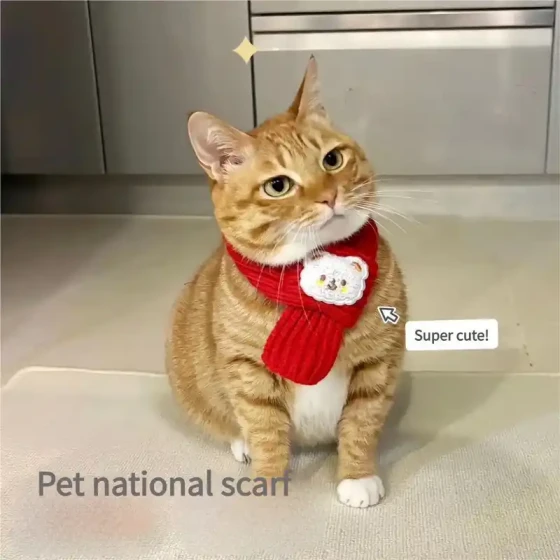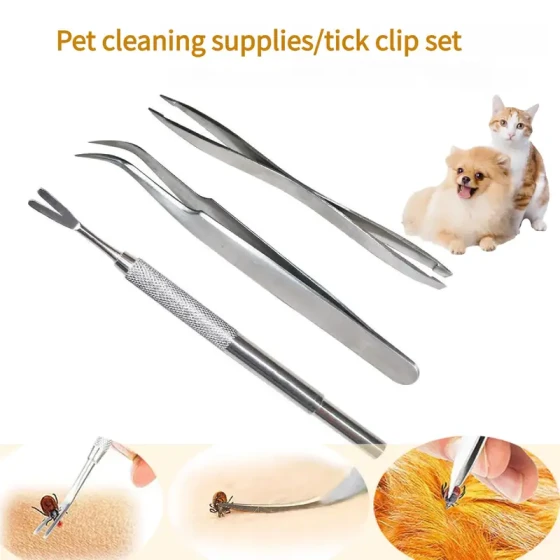What can kittens eat_Complete guide to cat diet
Newborn kittens are truly soft and adorable creatures whose every move can melt the hardest heart. But to let this little life thrive, what to eat and how to eat is a big subject, not just grabbing some cat food casually. If you are worried about this or just curious to learn more, this answer might give you some inspiration.
Core points first: For very young kittens that are not yet weaned, prioritize cat-specific milk powder; once they start trying solid food, be sure to pick commercial cat food labeled “kitten-specific” or “all life stages” with comprehensive and balanced nutrition, and strictly follow the principle of small frequent meals. Remember, cats are obligate carnivores, and many human foods are forbidden or even toxic to them.

Kittens: a unique life stage
We often say “look at three years to see old age,” but for cats, the first year after birth (for large breeds possibly up to 18-24 months) lays the foundation for their lifelong health. At this stage, these little fellows need much more nutritional support than adult cats for body development, bone growth, immune system perfection, brain, and vision development. Their bodies are like little “protein and energy factories” requiring a continuous supply of high-quality “fuel.” Therefore, choosing food specially designed for kittens is crucial.
Why can’t you feed casually?
Don’t be fooled by their small size; their digestive systems and nutritional needs are essentially different from humans and even dogs. Cats are strict carnivores, meaning their body structure and metabolism are designed to efficiently use animal proteins and fats. Adult cat food or human food often cannot meet kittens’ very high demands for protein, fat, calcium, phosphorus, and taurine (an essential amino acid cats cannot synthesize themselves; deficiencies can lead to blindness and heart disease).
Cat food map: from milk to solids
- Mother’s milk first (0-4 weeks): If possible, nothing is better suited for newborn kittens than their mother’s milk. It provides a perfect nutrition ratio and necessary antibodies.
- Artificial feeding (if necessary): If kittens lose access to mother’s milk or milk is insufficient, never feed cow’s milk! Most cats lose the ability to digest lactose after weaning; milk causes severe diarrhea and dehydration, possibly fatal for kittens. It’s like giving a lactose-intolerant person a whole piece of cheese — the consequences are obvious. In this case, you need cat-specific milk powder (KMR - Kitten Milk Replacer). Prepare as instructed, feed with a bottle in small frequent amounts, and be sure to help them “burp” afterward and stimulate elimination, similar to caring for human babies.
- Transition period (4-8 weeks): Around 3-4 weeks old, kittens can start trying solid food. Usually, this starts with wet food or kitten dry food softened with warm water or kitten milk replacer. Initially, put mushy food on a shallow dish to guide kittens to lick it or dab some at their mouth edge to get them used to the taste and texture. This process requires patience; some kittens adapt quickly, others more slowly.
- Full solid food (8 weeks and above): Around 7-8 weeks, most kittens can be fully weaned and only eat kitten food. Choose commercial kitten food labeled “kitten-specific,” whether dry, wet, or mixed feeding is fine. Kitten food kibble is usually smaller and easy to chew, with higher protein, fat, and energy content, and reinforced with nutrients like DHA that help brain and vision development.
How to feed? Small frequent meals are king
Imagine an infant’s stomach capacity, then look at a kitten, and you will understand why they need frequent meals.
- Under 4 months: Recommend feeding at least 3-4 times a day, even more small portions. Some kittens like free-choice dry food (bowl always available), but this requires monitoring individual kittens’ conditions and weight gain to avoid obesity.
- Over 4 months: Can gradually reduce to 2-3 meals per day.
- Over 6 months: Can fix at 2 meals per day.
How much to feed?
Cat food packaging usually includes recommended amounts based on age and weight, which is a good starting point. But remember, it’s just a guide; the specific amount should be adjusted according to your kitten's activity level, body shape, and most importantly—body condition. Don’t just look at weight but observe their body curves and feel the ribs — they should be easy to feel but not sharp. Too much or too little affects their health.
Food changing requires care:
When needing to switch cat food brand or move from kitten to adult formula (usually at 10-12 months, possibly later for large cats), take a gradual approach, spending at least 7-10 days increasing the new food ratio and decreasing the old. For example, days 1-2 new food is 1/4, days 3-4 are each half, days 5-6 new food is 3/4, then fully replace. Sudden changes can easily cause gastrointestinal issues, vomiting, or diarrhea.
What else besides cat food can they eat?
In principle, a kitten fed comprehensive and balanced commercial kitten food needs no extra supplements. Fancy supplements and treats often satisfy the caregiver’s desire to feed.
However, occasionally giving a “surprise” is okay, but it must be small portions, unseasoned, and fully cooked animal protein, such as cooked chicken, beef, or fish (remember to remove bones!). A piece about the size of a fingernail is enough; this is only a treat and must not replace staple food.
Some cooked vegetables (like pumpkin, carrots, broccoli) or small amounts of fruit (such as blueberries, cantaloupe) can be tried as occasional snacks. They provide some fiber or vitamins, but cats’ needs for plant-based foods are far less than humans’. Don’t expect them to love veggies like rabbits do. Many cats are not interested at all; don’t force — they are obligate carnivores, genetically programmed.
Water! Water! Water!
No matter what foods are fed, clean, fresh water must be available at all times! Especially for cats mainly eating dry food, sufficient water intake is crucial to prevent urinary tract problems. Some cats prefer flowing water, so consider a drinking fountain.
Red line warning: These things cannot be touched even once!
This list is very important, please remember! They are poisons to cats; even a little can cause serious consequences or death.
- Alliums (onions, garlic, chives, scallions, etc.): Raw, cooked, or powdered all contain sulfides that destroy cats’ red blood cells, causing anemia.
- Chocolate, coffee, tea, etc.: Contain theobromine and caffeine, which cats cannot metabolize. They stimulate the nervous system, causing arrhythmia, muscle tremors, and even death. Higher cocoa content is more dangerous (e.g., dark chocolate).
- Grapes and raisins: Causes are not fully understood but can lead to kidney failure. Even small amounts may cause serious consequences.
- Alcohol: Even a little can poison cats, affecting liver and brain function. Two teaspoons of whiskey can put a 5-pound kitten into a coma.
- Raw meat, raw fish, raw eggs: May contain parasites or harmful bacteria (e.g., salmonella, E. coli). Raw egg whites contain enzymes that interfere with vitamin B absorption. Raw fish contains thiaminase, which breaks down vitamin B1 in cats, causing neurological issues.
- Bones (especially cooked bones): Easily splinter and may injure cats’ mouth, throat, or intestines, even causing intestinal blockage.
- Human processed foods: Ham, sausages, bacon, etc. contain excessive salt, preservatives, and additives, burdening cats’ kidneys and overall health. Excess salt can cause sodium ion poisoning.
- Avocado: Contains a substance called persin, toxic to cats, causing vomiting, diarrhea, and other gastrointestinal discomfort.
- Citrus fruits: The pulp is usually fine, but peels and stems contain essential oils that may irritate cats’ digestive tract and nervous system; large intake can cause poisoning. Also, many cats dislike the citrus smell.
- Nuts: Especially macadamia nuts and walnuts are toxic to cats. Other nuts are high in fat, hard to digest, and may cause choking risks.
- Dog food: Dog food formula differs greatly from cat food; long-term feeding causes serious nutritional deficiency, as dog food cannot provide essential nutrients like taurine.
Final “official” advice
Raising kittens is full of surprises and challenges, and their diet is the foundation. Always choose reputable, internationally standard-compliant (like AAFCO) kitten food. Closely observe your kitten’s appetite, weight changes, mental state, and stool. If you notice any abnormalities (e.g., loss of appetite, persistent vomiting or diarrhea, no weight gain), don’t hesitate to consult a professional veterinarian immediately! The vet will give the most professional dietary advice and health guidance based on your cat’s specific condition.
After all, “Let them be strong, the breeze brushes the hills; let them be tough, the bright moon shines over the river” is carefree, but when it comes to your little master’s food issues, we still have to be practical and feed scientifically so that this little life, under your careful care, can grow up healthily and happily into a majestic (or soft and adorable) big cat.
(The End)

-560x560.webp)

